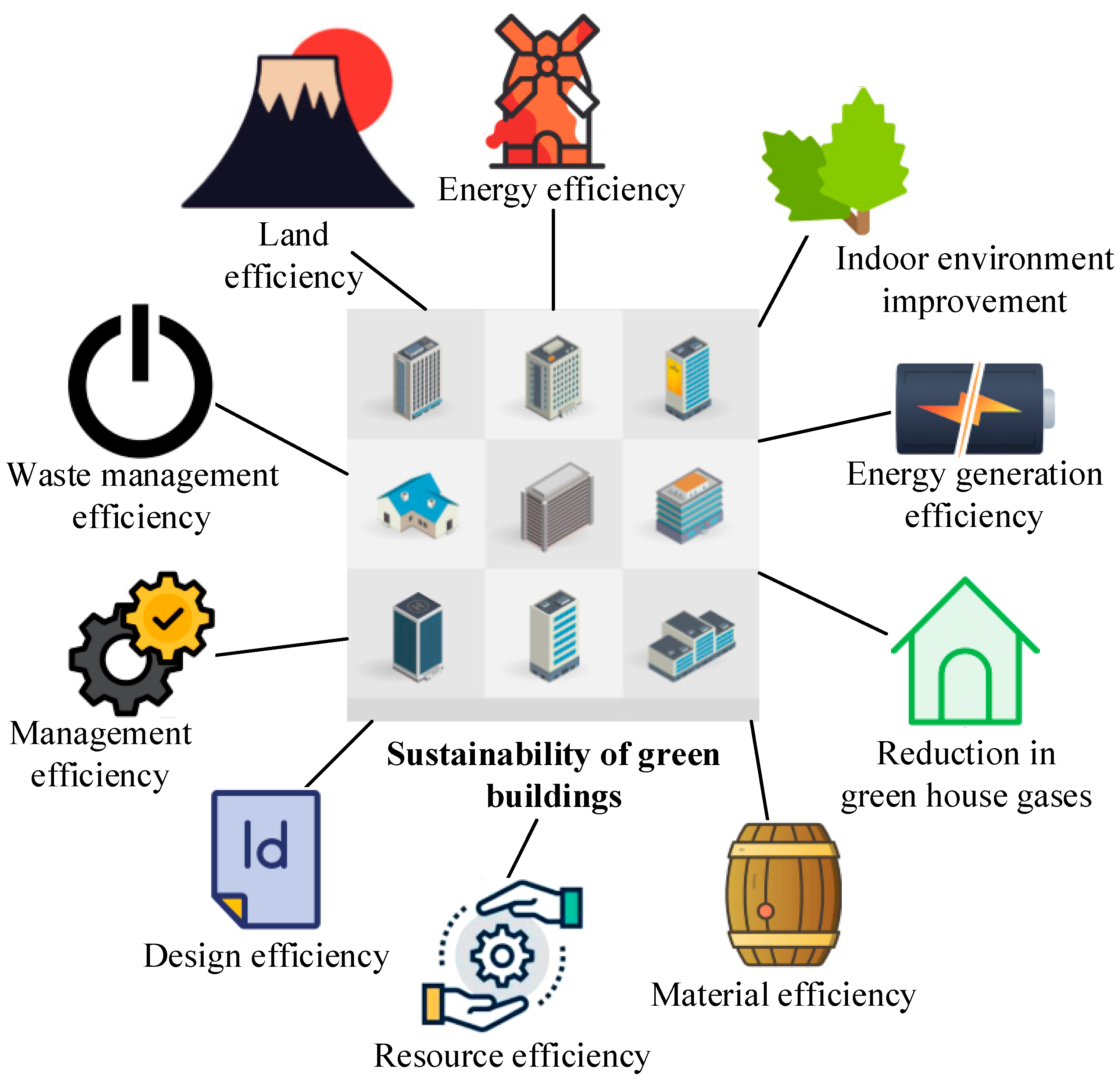Harmony in Green focuses on designing eco-friendly living spaces to create a greener future. In today's world, where environmental concerns are growing, it is crucial to consider sustainable design practices for our homes and living spaces.
Green design not only helps in conserving resources and reducing pollution, but it also promotes a healthier and more harmonious living environment. By incorporating elements like energy-efficient appliances, smart home technology, sustainable materials, and green building practices, eco-friendly living spaces can significantly contribute to a greener tomorrow.
This article explores the importance of harmony in green design and how it can lead to a more sustainable and environmentally-friendly lifestyle.

Credit: www.mdpi.com
Key Principles Of Sustainable Design
Sustainable design aims to minimize environmental impact, promote energy efficiency, and use recycled and sustainable materials. This practice is crucial in designing eco-friendly living spaces for a greener tomorrow. By minimizing environmental impact, architects and designers can reduce waste and pollution throughout the construction process. Promoting energy efficiency involves using energy-saving technologies and designing spaces to maximize natural light and ventilation. Additionally, by using recycled and sustainable materials, we can minimize resource depletion and reduce the carbon footprint of construction projects. Sustainable design considers the lifecycle of a building, from its construction to its operation and eventual demolition. By adopting these key principles, we can create harmonious green living spaces that support a more sustainable future.
| Key Principles of Sustainable Design: |
|---|
| 1. Minimizing Environmental Impact |
| 2. Promoting Energy Efficiency |
| 3. Using Recycled and Sustainable Materials |
Designing Eco-friendly Living Spaces
1. Incorporating Natural Light and Ventilation:
Maximize the use of natural light in your living space by installing large windows and skylights, allowing sunlight to flow in and reduce the need for artificial lighting during the day. Additionally, consider using light-colored curtains or blinds that allow light to pass through. Use cross ventilation techniques by positioning windows strategically to allow fresh air to circulate.
2. Implementing Energy-Efficient Appliances and Systems:
Opt for energy-efficient appliances with high energy star ratings to reduce electricity consumption. Choose smart thermostats that regulate temperature based on occupancy, saving energy when you're not at home. Install LED bulbs that are long-lasting and consume less electricity compared to traditional incandescent bulbs.
3. Creating a Connection with Nature:
Bring nature indoors by incorporating plants and greenery into your living space. Indoor plants not only purify the air but also create a calming environment. Consider using natural materials in your furniture, such as bamboo or reclaimed wood, to further enhance the connection with nature.
4. Utilizing Sustainable and Recycled Materials:
Choose building materials that are eco-friendly and sustainably sourced. Look for certifications like LEED or FSC to ensure their sustainability. Incorporate recycled materials into your design, such as reclaimed wood or recycled glass, reducing the demand for new resources and minimizing waste.
5. Designing for Longevity and Flexibility:
Create a living space that can adapt to changing needs over time. Design for flexibility by incorporating multipurpose furniture and modular storage solutions. Invest in durable materials and well-designed furniture that can withstand wear and tear, reducing the need for frequent replacements.
6. Incorporating Smart Home Technology:
Integrate smart home technology into your living space to optimize energy consumption. Use smart lighting systems that can be controlled remotely and motion sensors that automatically turn off lights when a room is unoccupied. Smart thermostats, security systems, and appliances can be programmed for maximum efficiency and convenience.
Benefits And Outcomes Of Sustainable Design
The benefits and outcomes of sustainable design are numerous and extend beyond just preserving the environment. Sustainable design has a positive impact on the environment, improving energy efficiency, saving costs, and enhancing well-being and health. By implementing sustainable design practices, we can contribute to a greener tomorrow and ensure the preservation of our natural resources.
| Subheading | Description |
|---|---|
| Positive Environmental Impact | Sustainable design helps reduce the carbon footprint, limits pollution, and minimizes waste generation. |
| Increased Energy Efficiency and Cost Savings | By incorporating energy-efficient technologies and materials, sustainable designs contribute to lower energy consumption and cost savings over time. |
| Improved Indoor Air Quality | Sustainable design prioritizes good air circulation and uses non-toxic materials, resulting in improved indoor air quality and better health for occupants. |
| Enhanced Well-being and Health | Sustainable designs create spaces that promote comfort, natural light, and connection to nature, leading to improved well-being and overall health. |
| Preservation of Natural Resources | Sustainable design aims at utilizing renewable resources, reducing waste, and preserving natural habitats and ecosystems. |
| Contribution to a Greener Tomorrow | By embracing sustainable design principles, we contribute to a more sustainable future for generations to come. |
Credit: www.linkedin.com
Creating eco-friendly living spaces is not only essential for a greener tomorrow, but also for a healthier and harmonious lifestyle. By incorporating sustainable design practices, such as using renewable materials, optimizing energy efficiency, and implementing efficient waste management systems, we can minimize our environmental footprint and contribute to a sustainable future.
Together, let's embrace the beauty of green design and create spaces that prioritize both our well-being and the planet's health.

 inews69
inews69
